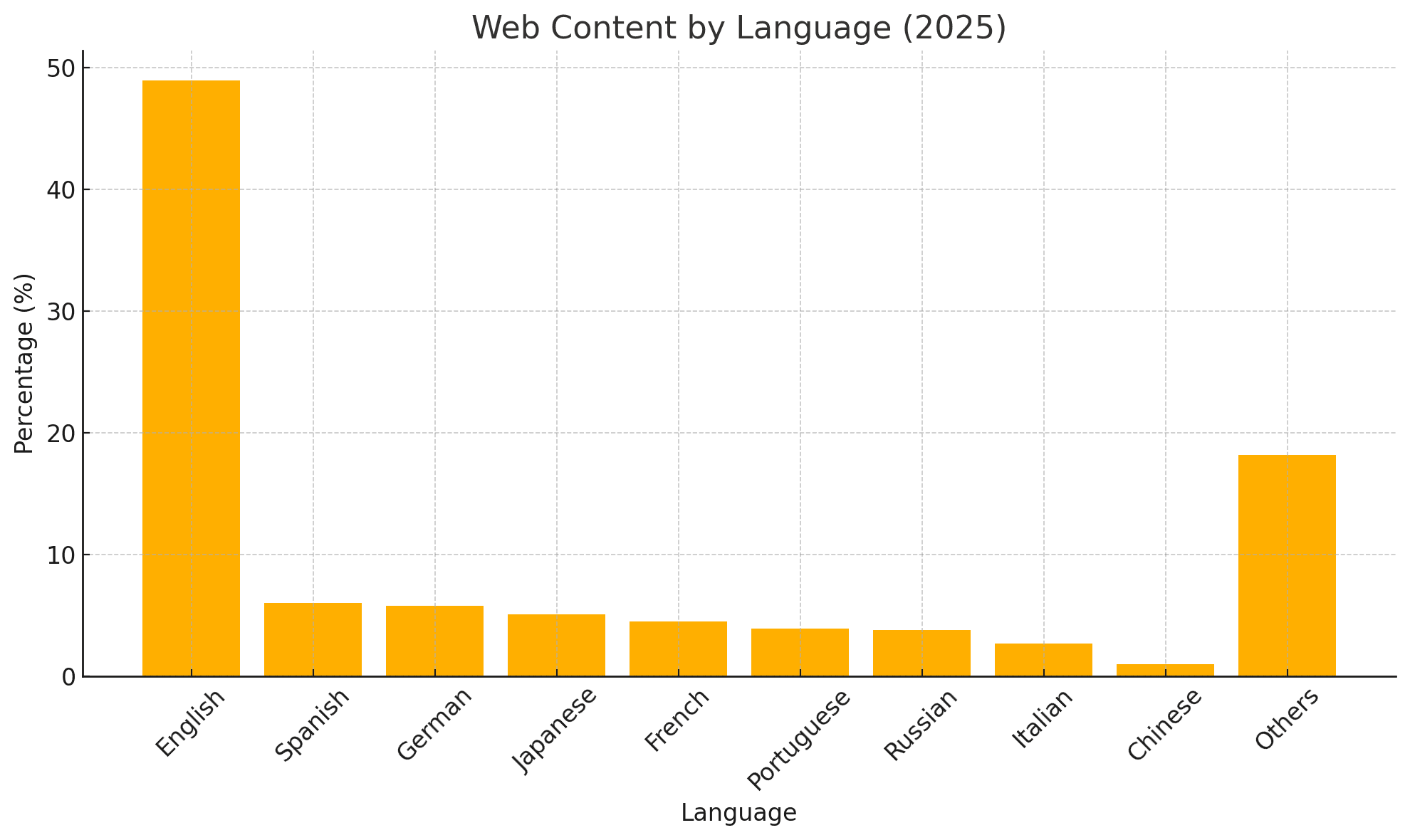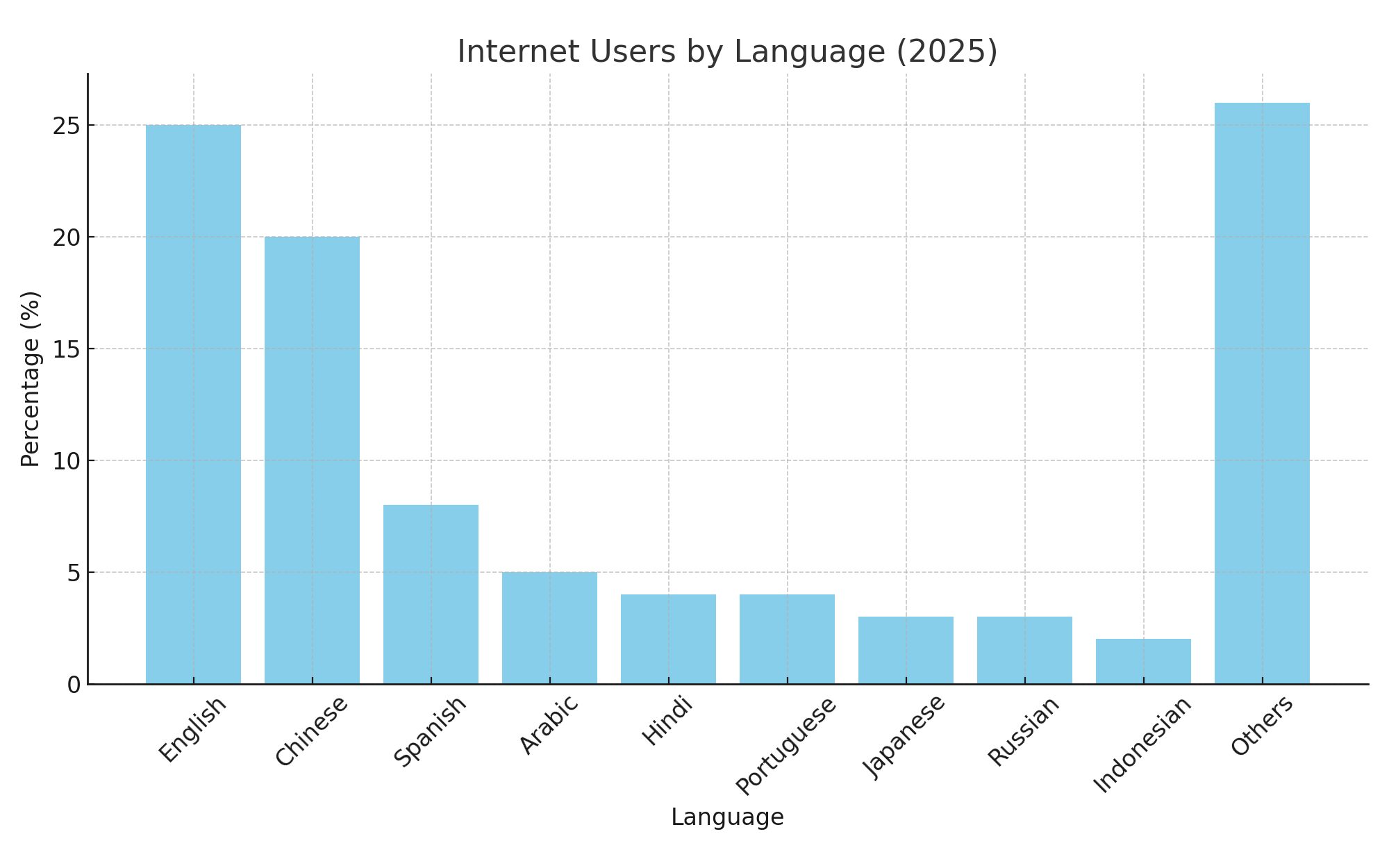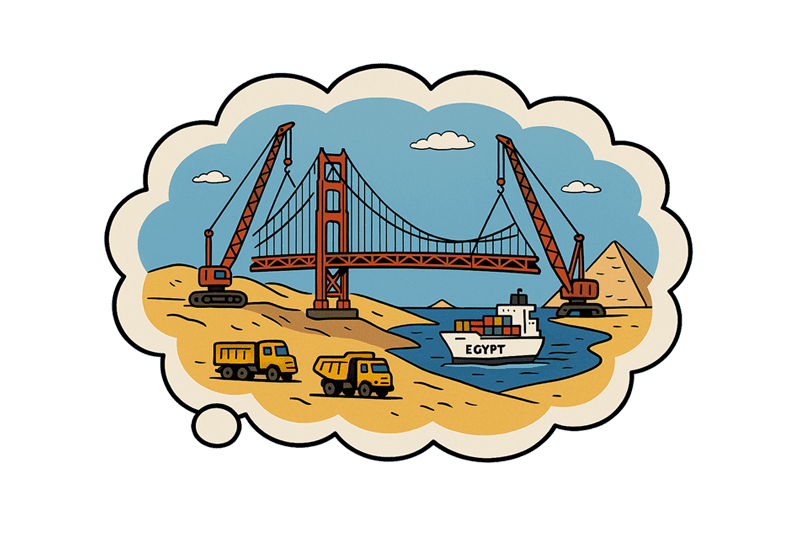Languages Translation Services Website Translation
Translation Statistics 2025: The Two Charts That Still Matter

Back in 2019, we showcased the two essential charts that illustrated the landscape of the translation industry. Fast forward to 2025, and though the charts have evolved, they remain crucial. Here’s why, and what’s changed.
How Big is the Global Translation Industry in 2025?
If translation was important in 2019, in 2025 it’s absolutely indispensable. The global language services market has surged impressively, now worth approximately £60 billion ($75 billion), up from around £43 billion ($53 billion) five years ago. That’s an annual growth rate nudging 6%. Even pandemics and economic turbulence couldn’t halt translation’s march, driven by ever-growing globalisation and digital communication.
Chart One: Languages Dominating the Web in 2025
English remains king—but only just. About 49% of all websites are still in English, though its dominance is slipping from around 56% in 2019. What’s interesting is the rise of Spanish, German, Japanese, French, and Portuguese—all carving larger slices of the internet pie. Meanwhile, Chinese, despite being spoken by nearly a fifth of the world’s internet users, represents just 1% of online content. That glaring gap reveals massive untapped potential.

Chart Two: Languages People Actually Speak Online
If content creation is skewed, internet user demographics tell another story. English speakers now make up only about 25% of global internet users, followed closely by Chinese (20%), Spanish (8%), Arabic (5%), and Hindi (4%). This mismatch means millions remain underserved by content in their own languages, offering huge growth opportunities for brands willing to invest in translation and localisation.
Top Languages Translated in 2025
The translation industry revolves significantly around English—but crucially, as a bridge to other languages. The big hitters remain Spanish, French, German, Chinese, Japanese, and Arabic, reflecting global market priorities and consumer purchasing power. Companies aren’t translating for vanity—they translate to sell, connect, and grow.
What’s Driving the Translation Boom?
Several key forces are propelling translation demand:
- E-commerce Explosion: Over half of global shoppers buy internationally, but most won’t purchase from sites not available in their native tongue. Multilingual product pages and user experiences have become non-negotiable.
- Streaming & Entertainment: Netflix, Amazon, YouTube—these platforms are investing billions into subtitling and dubbing. No longer is entertainment local; it’s global by default.
- AI & Tech Advances: Rather than replacing humans, AI-driven translation (think machine translation and generative AI) boosts productivity. Companies now translate more content than ever, relying on skilled translators for nuance and cultural accuracy.
- Legal & Medical Needs: Precision translation in highly regulated sectors continues to grow robustly, accounting for nearly a quarter of industry revenue. Legal contracts and medical documents can’t afford errors or approximations.
Where Are We Seeing Growth?
Europe and North America remain translation’s biggest markets, accounting for around 85% of global spend. However, Asia-Pacific, particularly China, India, and Southeast Asia, is now the fastest-growing region. Asian markets are rapidly digitising and globalising, demanding both translation into local languages and from local languages into English and other Western languages.
What Does This Mean for Businesses?
The takeaways are clear:
- Localisation Isn’t Optional: English alone won’t cut it—3 out of 4 internet users don’t speak it. Companies must target the languages of their actual audiences, especially where gaps like Chinese exist.
- Quality Matters: Free, automated translations may save pennies but lose pounds. Only professionally translated content wins hearts, minds, and wallets in international markets.
- Strategic Language Choices: Prioritise translation into languages that combine large markets with underserved content, such as Chinese, Arabic, and Hindi.
Conclusion
Five years on, the two charts from 2019 tell us one compelling truth: translation remains at the heart of global business success. In 2025, the industry is larger, more critical, and packed with opportunities than ever before. Companies that understand the nuances of language—not just the words, but the culture behind them—are the ones that truly connect with their audiences. The data doesn’t lie: it’s time to speak the language of your global customers.









